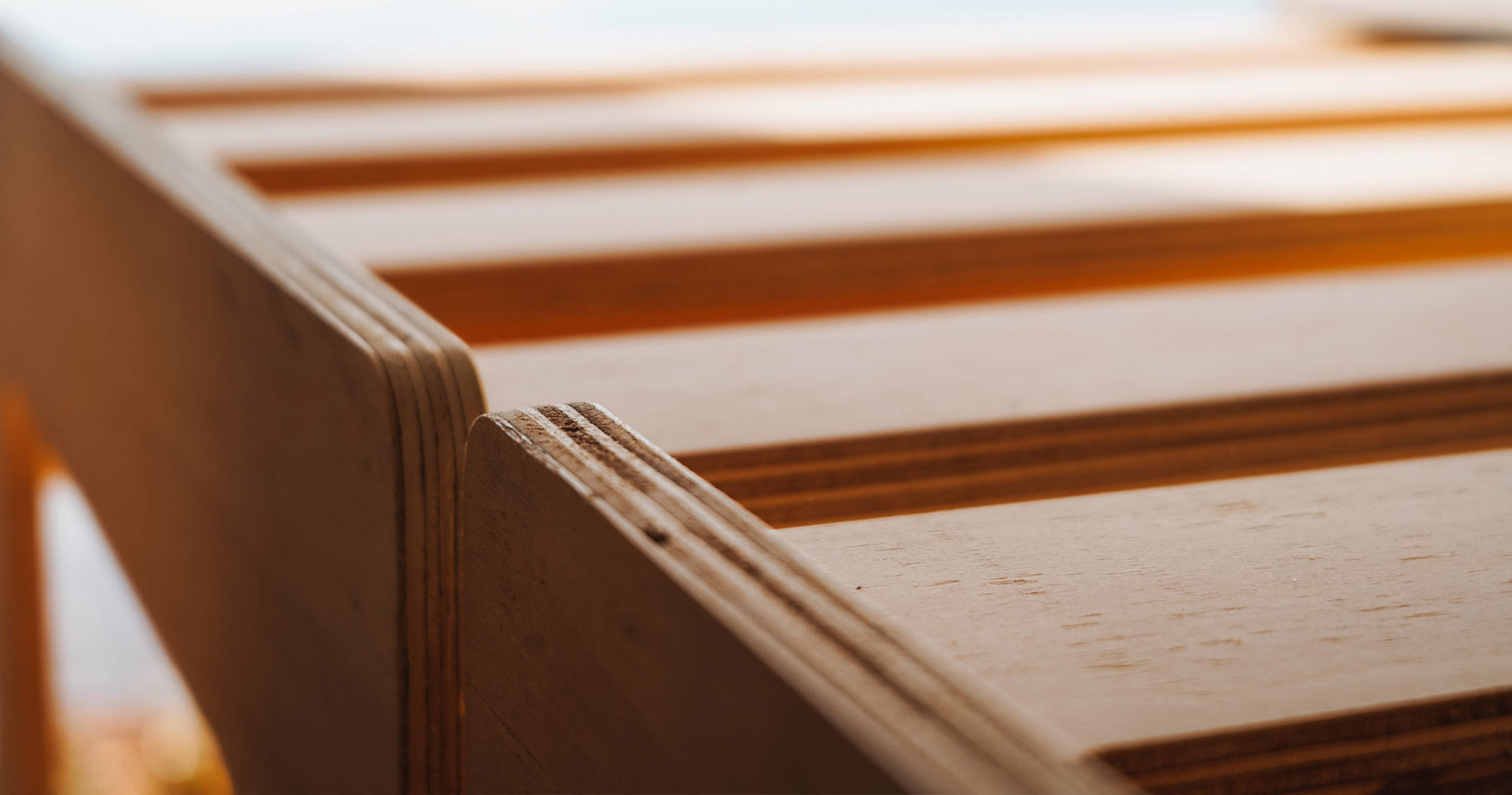Simplify, simplify: a simple design manifesto
In the intricate tapestry of design, simplicity is an essential thread. This is especially true in the compact quarters of campervan furniture. Here’s why.

Limited Space, Maximum Ingenuity
Within the confined dimensions of a campervan, simplicity is not an aesthetic: it’s a necessity. Every piece of furniture must serve a dual purpose, and so every excess becomes impractical. Plywood, with its remarkable strength-to-weight ratio, emerges as the ideal medium. Its minimalist aesthetic brings both visual coherence and an illusion of spaciousness, and lends itself equally well to a coat of paint, a subtle tint – or a bare, natural finish.
Adapting to Dynamic Needs
How does the adaptability of plywood contribute to functional elegance within the dynamic constraints of a converted van? Flexibility is paramount when designing campervan furniture, where the living space transforms between various functions. Simplicity ensures that each piece can effortlessly adapt to changing needs. Folding tables, convertible seats with hidden storage, and modular designs exemplify the versatility that simplicity brings to plywood campervan furniture.
The Minimalist Aesthetic
The minimalist aesthetic fits well in a campervan. Instead of adding unnecessary decorations, the design focuses on letting the natural beauty of plywood shine. This choice creates a calm and organised living space, perfect for those who want peace in nature.
Simple inspirations
Two classic inspirations come to mind. The Japanese principle of “Ma,” or the art of negative space, applies well to van design. In creating furniture with an appreciation for the spaces in between, designers allow the user to experience not only the form but also the silence and tranquillity that simplicity brings. Meanwhile, from the west, Shaker furniture’s utilitarian simplicity remains a testament to the enduring allure of designs unburdened by excess.
Plywood Shapes
Three modern designers have made plywood a big part of their work. Charles and Ray Eames used moulded plywood in the mid-20th century for their famous Eames Lounge Chair.
Alvar Aalto, a Finnish designer, used bent plywood in his Paimio Chair, showing how plywood can be strong and have beautiful curves.
Tom Dixon, a British designer, used plywood in new ways, creating the dynamic S Chair. In their way, these designers all proved that plywood, humble and utilitarian, could be used to create inspirational furniture.
Embracing Subtraction
In contemplating simplicity, we can apply our thinking to every aspect of campervan design. Question the necessity of each component. Does this campervan truly need a toilet, an elaborate heating system, a power-consuming electric fridge, extra windows, or a built-in hob? What do I really need? How can the art of subtraction lead towards a more streamlined, efficient, and fulfilling campervan experience?
Liberation from modern disorder
Looking at it through this lens, a campervan stops being a vehicle for ‘stuff.’ It becomes a sanctuary from modern living’s clutter, an escape from the relentless influx of gadgets. The pared-down elegance and purposeful simplicity becomes an antidote to consumption. Besides improving fuel efficiency, can shedding unnecessary campervan clutter lead to a more fulfilling campervan experience?
The Continuing Journey
As we peel away the layers of campervan design, the philosophical journey continues: if life on the road can be enhanced by simplicity, can it lead us towards a more harmonious and fulfilling approach to life?
Now you could be interested by our related article : discover why conversion van professionals swear by simplevans kits.





